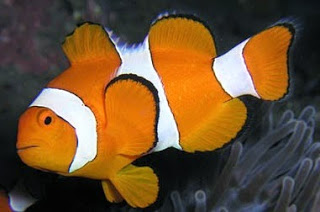Who would have thought if garlic can be a tonic to boost the body's resistance to disease koi fish. Garlic has been known as a natural antibiotic for human diseases. But it can also be used for prevention of disease in typical ornamental fish ponds. It is said that the use of garlic has been done by the growers of shrimp farms in Lampung (TROBOS, April 1, 2007).
Garlic has been known as a medicinal plant which can counteract / cure many diseases. Like tuberculosis, influenza, antidiabetic, lowers high blood pressure, treat burns, rheumatism, prevent liver toxicity, anti-cholesterol, and so on. Berkasiat even prevent cancer.
So it makes sense if garlic can also be used as a natural antibiotic for animals or fish. Ingredient or ingredients in garlic called allicin is able to effectively kill germs or bacteria. Besides, garlic also contains sativine which serves to accelerate the growth of cells and tissues.
One of the koi is quite deadly disease is Koi Herpes Virus (KHV). This disease is an acute and malignant and can cause mass death of fish in a relatively short time.
It turns koinya fish die from KHV disease caused by a virus. Ironically, this disease has no cure and overcome simply by preventing.
Fortunately, experiments performed at the IPB later showed that using garlic to enhance the durability of his favorite fish against KHV disease. The trick is to make the feed formula tonic for koi, by mixing garlic juice on food koi.
It turns out the tonic feed proved successful. Fish mortality is reduced, even looking healthier than ever. Water pool filled with foam as a result of the previously ailing fish slime has been cleared.
To make the manufacture of anti-KHV feed is basically quite easy. Peeled garlic, mixed with water and then blended. The resulting liquid is filtered to obtain extract and separate it from the dregs.
To measure or comparison onions with water, based on the results of research in IPB, the ideal is 50 grams / 100 ml of water to 70 g / 100 ml. If the size exceeds feared this formula does not work effectively.
After that onion juice is sprayed into fish feed then dianginkan to blend with the feed. After drying the prepared feed given to fish.
Garlic has been known as a medicinal plant which can counteract / cure many diseases. Like tuberculosis, influenza, antidiabetic, lowers high blood pressure, treat burns, rheumatism, prevent liver toxicity, anti-cholesterol, and so on. Berkasiat even prevent cancer.
So it makes sense if garlic can also be used as a natural antibiotic for animals or fish. Ingredient or ingredients in garlic called allicin is able to effectively kill germs or bacteria. Besides, garlic also contains sativine which serves to accelerate the growth of cells and tissues.
KHV vs Garlic
One of the koi is quite deadly disease is Koi Herpes Virus (KHV). This disease is an acute and malignant and can cause mass death of fish in a relatively short time.
It turns koinya fish die from KHV disease caused by a virus. Ironically, this disease has no cure and overcome simply by preventing.
Fortunately, experiments performed at the IPB later showed that using garlic to enhance the durability of his favorite fish against KHV disease. The trick is to make the feed formula tonic for koi, by mixing garlic juice on food koi.
It turns out the tonic feed proved successful. Fish mortality is reduced, even looking healthier than ever. Water pool filled with foam as a result of the previously ailing fish slime has been cleared.
Feed manufacture of anti-KHV
To make the manufacture of anti-KHV feed is basically quite easy. Peeled garlic, mixed with water and then blended. The resulting liquid is filtered to obtain extract and separate it from the dregs.
To measure or comparison onions with water, based on the results of research in IPB, the ideal is 50 grams / 100 ml of water to 70 g / 100 ml. If the size exceeds feared this formula does not work effectively.
After that onion juice is sprayed into fish feed then dianginkan to blend with the feed. After drying the prepared feed given to fish.
Feeding can be done 2 times a day if there have been previous affected fish. However, for the prevention of just 1 time a week. Nevertheless ideal for feeding frequency, until now not known with certainty.
Use of this feed is also able to increase the durability of fish to other diseases. Enough with low cost, antibiotics and natural tonic can be formulated easily by utilizing the white bottom. And the pet to be healthy koi fish avoid the disease.
Use of this feed is also able to increase the durability of fish to other diseases. Enough with low cost, antibiotics and natural tonic can be formulated easily by utilizing the white bottom. And the pet to be healthy koi fish avoid the disease.
By : Decorative Fish












































